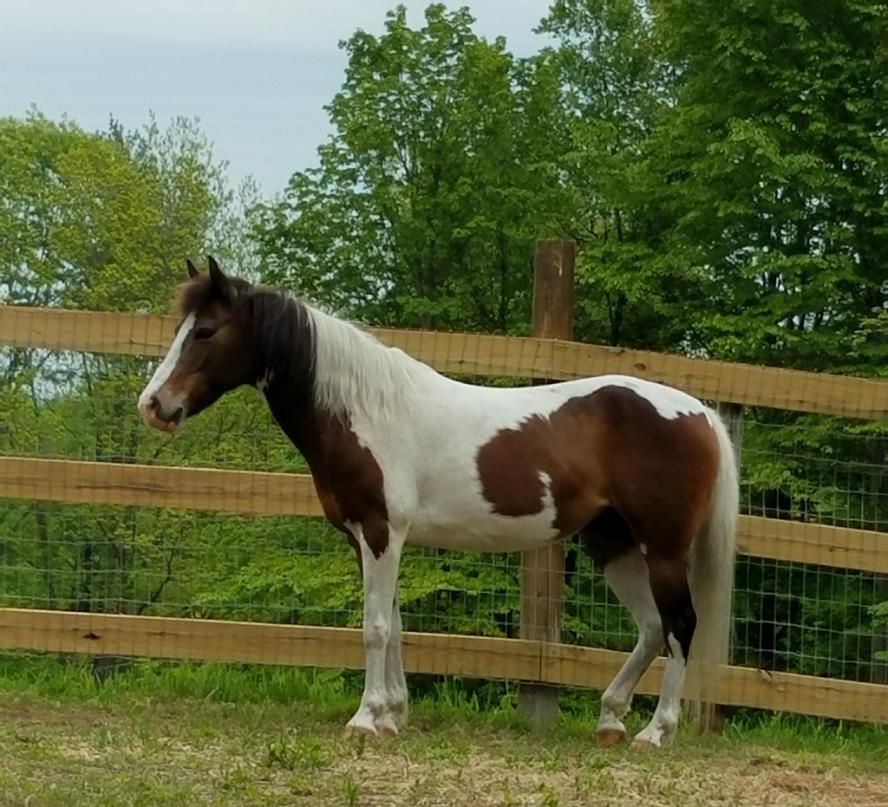-
About
- Leadership & Faculty
- News & Events
-
Admissions
-
Academics
- Graduate
- Advanced Clinical Training
- Continuing Education
-
Student Life
-
-
Accommodations
- Our Campus
-
Accommodations
- Graduate Resources
-
-
Research
-
Hospitals & Clinics
- Emergency Care
- Hospital Services
-
Community Outreach
- Volunteer
Fixing the Plight of a Pony
When Pippa dislocated her hock in a training accident, the injury looked gruesome, but a veterinarian expert in healing fractures was optimistic she could recover.

When Pippa dislocated her hock in a training accident, the injury looked gruesome. Her owner, Kay Spencer, was heartbroken. “You look at a horse with a broken leg and the first thing you think is, ‘That’s it. They don’t come back from this,’” she says.
Spencer relocated to Massachusetts from California in 2018. Pippa, a small pony, made the trek across the country with Spencer’s other horse, Brooke, as a travel companion. The two equines bonded and became permanent barn mates. But while Pippa was a great friend for Brooke, she had a very nervous and reactive personality. Spencer sought the help of a reputable trainer to ease her into her new life. A year later, the accident happened.
Veterinarian José M. García-López received the call from Spencer’s primary care veterinarian, who delivered the grim news about Pippa’s injury. But, much to Spencer and her veterinarian’s surprise, García-López, who heads the Issam M. Fares Sports Medicine Program at Cummings School of Veterinary Medicine, was optimistic. “He told me he has treated horses that have totally come back from this particular injury, so I decided I was going to give it a shot,” says Spencer.
Pippa suffered from a cranial tarsal luxation, which then caused her to dislocate the long limb below her hock—similar to a dislocation of the ankle in a person. It was a lucky break in that because there was no opening in the skin, the risk of infection could be mitigated. “We deal with this type of injury on a regular occasion,” says García-López. “A lot of these types of injuries are fixable, not only for life but also for athletic future.”
Using fluoroscopy—real-time radiographs (x-rays)—a long locking plate was surgically placed on the back of Pippa’s hock to put it back into place in March 2019. She did well in surgery, then spent a month recovering at Tufts Equine Center before returning home. “I went out there at least once a week, and I would just bring a folding chair and sit with Pippa. I had a little box of grooming tools that had been sanitized so I could groom her,” says Spencer. “Everybody at the hospital was super helpful and friendly. She was clearly being well taken care of, and even had a bag of treats hanging on her door!”
Though it was an arduous journey, there was a silver lining to the experience. Along with putting a big lesson in bandaging from the Hospital for Large Animals into practice daily during her home rehabilitation period, Spencer grew closer with Pippa. “She couldn’t free graze, so I grazed her by hand every day for a couple of hours for six weeks,” she says. “And one sunny day, she just laid down in the grass and fell asleep with me sitting next to her. It was so sweet because she is a very untrusting horse, and for her to lay down with me showed a huge amount of trust.”
Now, Pippa is content as Brooke and Spencer’s companion. Although she’s not a riding pony, she does have an affinity for children. “There’s a little girl who comes up and brushes her mane and braids it,” Spencer explains. “Pippa loves being loved on.”